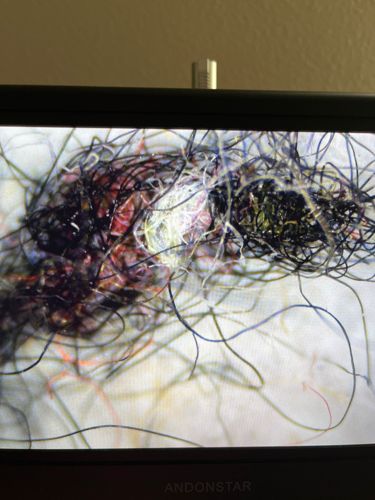Carpet Beetle Larva (unidentified species)
Scientific Name: Dermestidae (Dermestes spp. or Anthrenus spp. likely)
Order & Family: Coleoptera, Dermestidae
Size: Larvae typically range from 2mm to 10mm (0.08 to 0.4 inches) depending on the specific species and developmental stage.

Natural Habitat
Indoors, in undisturbed areas like carpets, rugs, upholstered furniture, clothing, museums, attics, and sometimes in food pantries. Outdoors, they can be found in animal nests, dead animals, or dried plant material.
Diet & Feeding
Keratin-based materials (hair, wool, silk, feathers, dried skin, fur), natural fibers, dried animal products (pet food, dead insects), stored food products (grains, spices, dried fruit), and sometimes plant-based materials.
Behavior Patterns
The image appears to show a carpet beetle larva, possibly a varied carpet beetle or black carpet beetle larva, camouflaged amongst fibers. Larvae are known for their slow, crawling movement and will often seek out dark, undisturbed locations with suitable food sources. They shed their skin (molt) multiple times as they grow, and the cast skins can often be found along with the larvae. The larvae are the damaging stage, as adults primarily feed on pollen and nectar outdoors.
Risks & Benefits
Risks: Primarily a pest, causing damage to textiles, clothing, carpets, and stored food products. They can cause financial loss due to damaged personal property and museum collections. Some people may experience skin irritation (dermestid dermatitis) from contact with the larvae's bristles. Benefits: In nature, some species play a role as scavengers, breaking down dead animal matter and contributing to nutrient cycling. However, in human environments, their presence is generally undesirable.
Identified on: 9/7/2025